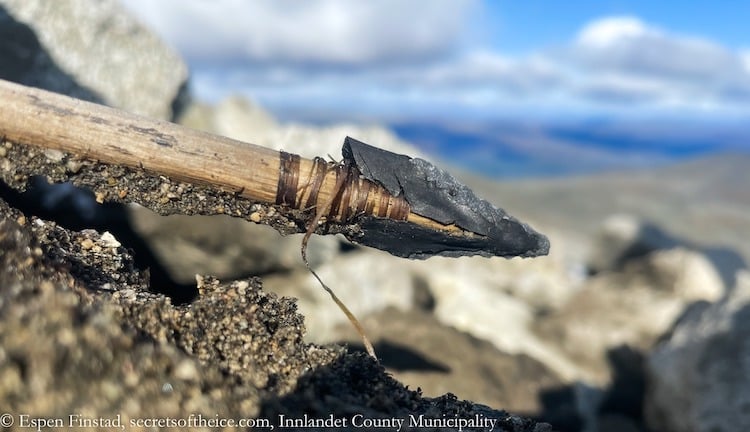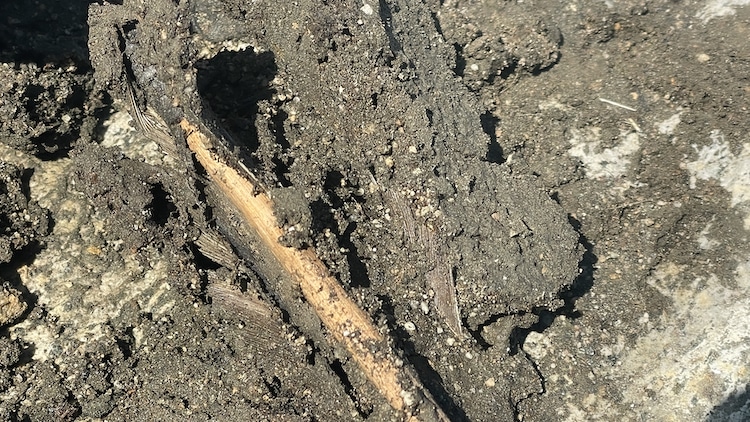
The arrow has a quartzite arrowhead on a birch shaft. (Photo: Espen Finstad/Secrets of the Ice)
Climate change is impacting temperatures around the world. Collapsing ice shelfs and melting glaciers regularly make the news as indicia of a warming planet and shifting ecosystems. The receding of the planet’s ice is also exposing remnants of the past which have lain preserved under cold temperatures for hundreds, even thousands, of years. The glaciers of Norway have yielded particularly interesting finds from past inhabitants of the region. In the Jotunheimen Mountains, archeological group Secrets of the Ice recently discovered an exciting Bronze Age arrow, complete with shaft, quartzite arrowhead, and even several fletching feathers.
The arrow was discovered on one of the group’s regular patrols over regions where they know warming temperatures are melting ice. If an ancient item is missed, it may be destroyed by the elements once the ice that formerly sheltered it is melted. Luckily, the Bronze Age arrow, dating to about 3,000 years ago, was discovered in time. It has a birch wood shaft and three feathers at the tail, which are the fletchings which help arrows fly. Such delicate materials have been frozen preserved under the ice since they were dropped millennia ago.
The weapon also has an arrowhead of quartzite stone, cut into a point and covered in organic pitch. “The pitch was used for securing the arrowhead to the shaft and to smooth the front of the arrow, allowing for better penetration. Arrows with preserved arrowheads still attached are not uncommon during the Iron Age on our ice sites, but this early they are very rare,” says Lars Pilø, archaeologist for Secrets of the Ice. While the arrow was likely used for reindeer hunting, it was not discovered near the remains of any blinds, such as those that have been found elsewhere. Likely lost on an ancient hunt, the arrow is remarkable for its amazing preservation. Despite being broken into three parts from the weight of the ice, it is a fascinating remnant from a lost era.
This 3,000-year-old arrow has been well preserved for millennia by glaciers.

Even a feather remains preserved! (Photo: Espen Finstad/Secrets of the Ice)
h/t: [Live Science]
Related Articles:
2,700-Year-Old Petroglyphs Are Discovered Under Moss in Sweden
1,900-Year-Old Ancient Roman Swords Are Found in a Cave Above the Dead Seas
Fossilized Footprints Present Evidence of Earliest Known Shoes
Norwegian Family Discovers Bronze Age Rock Paintings on a Hike
